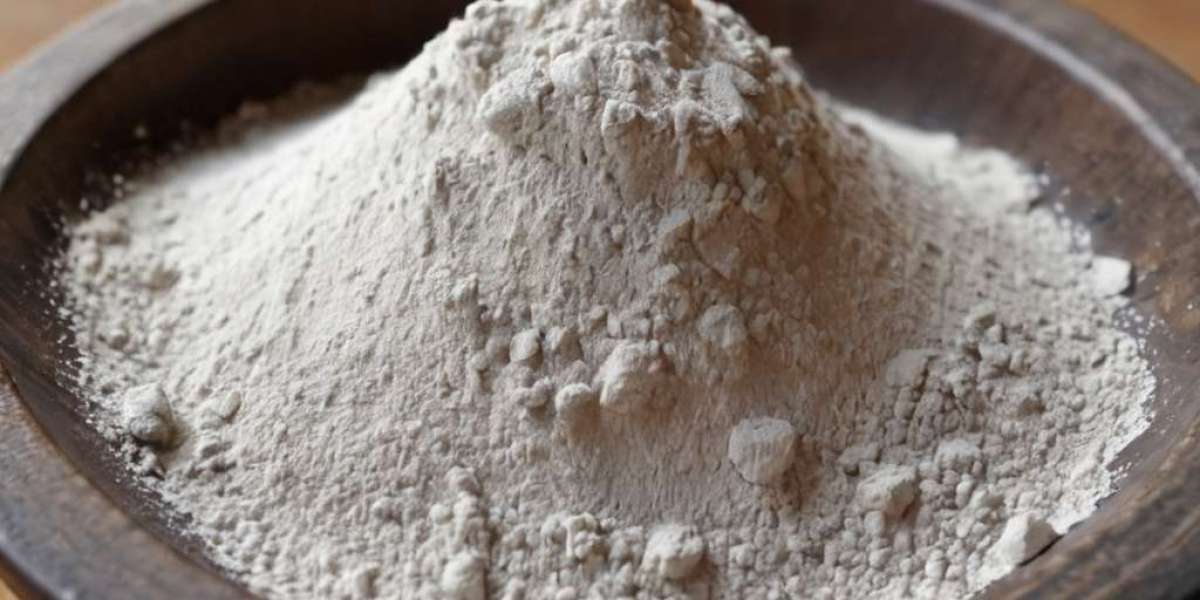The global alcohol ingredients market size attained a value of about USD 2.40 billion in 2023. The market is further expected to grow in the forecast period of 2024-2032 at a CAGR of 9.60% to reach nearly USD 5.38 billion by 2032. This remarkable growth in the alcohol ingredients market is driven by various factors, including the continuous pursuit of efficiency and quality improvement in alcohol production.
One critical aspect contributing to this growth is the innovative use of enzymes in the alcohol production process. Enzymes, as biocatalysts, play a pivotal role in transforming raw ingredients into the beverages we enjoy. They not only enhance efficiency but also have a profound impact on the quality, flavor, and aroma of alcoholic products. In this blog post, we'll take a deep dive into the fascinating world of enzymes in alcohol production, exploring how they are revolutionizing the industry.
Understanding Enzymes
To comprehend the significance of enzymes in alcohol production, we must first understand what enzymes are and how they function. Enzymes are biological molecules, typically proteins, that act as catalysts in various chemical reactions. They speed up these reactions without being consumed themselves. In the context of alcohol production, enzymes are essential because they facilitate the conversion of raw ingredients into alcohol.
There are several types of enzymes used in alcohol production, each with its unique role. Let's take a closer look at some of them:
1. Amylase
Amylase enzymes are crucial in breaking down starches into simpler sugars like glucose and maltose. In the world of brewing and distillation, the source of starch can vary from malted barley in beer production to grains like corn or rice in the case of whiskey. Amylase enzymes are responsible for converting these starchy grains into fermentable sugars, a critical step in alcohol production.
2. Protease
Protease enzymes are involved in the breakdown of proteins into amino acids. While the primary goal in alcohol production is to convert sugars into alcohol, proteases play a role in yeast nutrition. Amino acids released from protein breakdown can support yeast growth and ensure a healthy fermentation process.
3. Cellulase
Cellulase enzymes are essential when using raw materials with high cellulose content, such as sugarcane or some fruit peels. Cellulases break down cellulose into simpler sugars, which can then be fermented by yeast. This is particularly important in the production of alcoholic beverages like rum.
4. Lipase
Lipase enzymes assist in breaking down lipids (fats and oils) into fatty acids and glycerol. While lipids are not the primary source of alcohol fermentation, they can influence the mouthfeel and aroma of the final product. Lipase activity is crucial in crafting spirits with unique flavors and textures.
Enzymes in Malting and Mashing
Enzymes are introduced at various stages of alcohol production, with their roles evolving as the process unfolds. In the initial stages, during malting and mashing, enzymes play a critical role in preparing the raw materials for fermentation.
The role of enzymes in malting
Malting is a crucial step in beer production, where grains like barley are soaked in water, allowed to germinate, and then dried. Enzymes, particularly amylases, are active during germination. They break down the starches stored in the grain into fermentable sugars, providing the yeast with the necessary fuel for fermentation.
Enzymatic breakdown of starch during mashing
In mashing, the malted grains are mixed with hot water to create a mash. This is where the magic of enzymatic action continues. The heat activates enzymes, primarily amylase, to convert more starches into sugars, resulting in a sugary liquid known as wort. This wort will later be fermented to produce beer. Temperature and pH levels are carefully controlled during mashing to optimize enzyme activity and ensure a successful conversion of starches.
Enzymes in Fermentation
After the malting and mashing stages, the sugary wort is ready for fermentation. This is where yeast comes into play. However, enzymes continue to have a crucial role to play in the process.
Enzymatic reactions during fermentation
During fermentation, yeast consumes the sugars in the wort and converts them into alcohol and carbon dioxide. Enzymes, particularly those produced by the yeast itself, facilitate these chemical reactions. Enzymatic activity helps yeast metabolize sugars efficiently, leading to higher alcohol yields and more consistent results.
Importance of enzymes in yeast metabolism
Enzymes involved in yeast metabolism ensure that the yeast cells have a readily available source of nutrients. This is essential for yeast health and vitality throughout the fermentation process. Healthy yeast cells lead to a robust and complete fermentation, contributing to the overall quality of the final product.
Controlling enzyme activity during fermentation
Controlling enzyme activity during fermentation is critical to achieving desired results. Factors such as temperature, pH, and the choice of yeast strains can influence enzymatic reactions. Brewers and distillers carefully monitor and adjust these conditions to optimize enzyme performance and maintain product consistency.
Improving Efficiency with Enzymes
Enzymes have a profound impact on the efficiency of alcohol production processes. By enhancing the conversion of raw materials into alcohol, they can lead to significant improvements in production efficiency.
Enhancing alcohol yield through enzymatic conversion
Efficiency in alcohol production is often measured by the yield of alcohol obtained from a given amount of raw materials. Enzymes, particularly amylases and cellulases, help increase this yield by ensuring that more of the available starches and cellulose are converted into sugars that can be fermented. This means less raw material is wasted, and more alcohol is produced from the same resources.
Reducing energy and resource consumption
Efficiency isn't just about maximizing yield; it's also about minimizing waste and resource consumption. Enzymes help achieve this by enabling lower-temperature mashing and reducing the need for extensive mechanical processing. This translates to energy savings and a more sustainable approach to alcohol production.
Case studies showcasing increased efficiency
To illustrate the real-world impact of enzymes on production efficiency, let's explore a couple of case studies:
Case Study 1: Brewery X
Brewery X implemented amylase enzymes in their brewing process, resulting in a 15% increase in alcohol yield per batch. This not only boosted production but also reduced their grain procurement costs by 10%.
Case Study 2: Distillery Y
Distillery Y adopted cellulase enzymes for the breakdown of fruit peels in their brandy production. This not only improved the extraction of sugars from the peels but also reduced the need for additional sugar sources, leading to a 20% reduction in resource consumption.
Enhancing Quality with Enzymes
While enzymes are essential for efficiency, they also play a pivotal role in shaping the quality, flavor, and aroma of alcoholic products.
Enzymes' impact on flavor and aroma development
Enzymatic reactions during fermentation can produce a wide range of flavor and aroma compounds. For example, esters, which contribute fruity and floral notes to beverages, are formed through enzymatic processes. The specific enzymes involved can vary depending on the type of alcohol being produced, providing distillers and brewers with precise control over flavor profiles.
Enzymatic methods for improving alcohol purity
Enzymes can be employed to enhance the purity of alcohol by breaking down undesirable compounds. For instance, enzymes can be used to reduce the levels of unwanted impurities like methanol or fusel alcohols, resulting in a smoother and cleaner final product.
Enzymatic solutions for addressing common production challenges
Enzymes are also valuable in addressing challenges that can arise during alcohol production. For example, enzymes can aid in the removal of haze-causing proteins or in the clarification of cloudy liquids, ensuring that the end product meets quality standards.
Regulatory and Safety Considerations
As enzymes become increasingly integral to alcohol production, regulatory guidelines and safety considerations come into play.
Regulatory guidelines for enzyme use in alcohol production
Different regions and countries have specific regulations governing the use of enzymes in food and beverage production, including alcoholic beverages. It's essential for producers to stay informed about these guidelines to ensure compliance.
Ensuring safety and compliance in enzyme applications
Safety is a paramount concern when using enzymes in production. Producers must follow best practices to ensure that enzymes are handled, stored, and used safely. This includes proper labeling, employee training, and adherence to recommended dosage levels.
Environmental implications and sustainability
The use of enzymes in alcohol production also has positive environmental implications. By increasing efficiency and reducing resource consumption, enzyme applications contribute to more sustainable and eco-friendly production methods, aligning with the growing demand for environmentally conscious products.
Future Trends and Innovations
The world of enzymes in alcohol production is continuously evolving. As the industry strives for greater efficiency, quality, and sustainability, several future trends and innovations are worth noting.
Emerging enzymes and their potential impact
Researchers are constantly discovering and developing new enzymes with specific applications in alcohol production. These enzymes may offer even more precise control over the brewing or distillation process, leading to novel flavors and enhanced product consistency.
Technological advancements in enzyme applications
Advancements in biotechnology are opening up new possibilities for enzyme applications. Enzymes can be tailored and engineered to perform specific tasks, making them even more valuable in alcohol production.
The role of enzymes in the future of alcohol production
As the alcohol industry continues to expand and diversify, enzymes will play a central role in meeting consumer demands for unique and high-quality beverages. Producers who embrace enzyme technology are likely to thrive in this competitive market.
Conclusion
The global alcohol ingredients market is on a remarkable growth trajectory, and enzymes are a driving force behind this expansion. They are the unsung heroes of alcohol production, enhancing efficiency, improving quality, and shaping the flavors and aromas that we savor in our favorite beverages.
Enzymes have come a long way from being mysterious biological entities to becoming indispensable tools in the hands of brewers and distillers. Their potential for further innovation and transformation in the alcohol industry is exciting, and we can expect to see even more remarkable developments in the years to come.
As consumers continue to seek unique and high-quality alcoholic products, the role of enzymes in alcohol production is poised to become even more significant. Whether you're a producer looking to optimize your processes or a consumer interested in the science behind your favorite drink, understanding the role of enzymes in alcohol production is a fascinating journey into the heart of the beverage industry's evolution.







